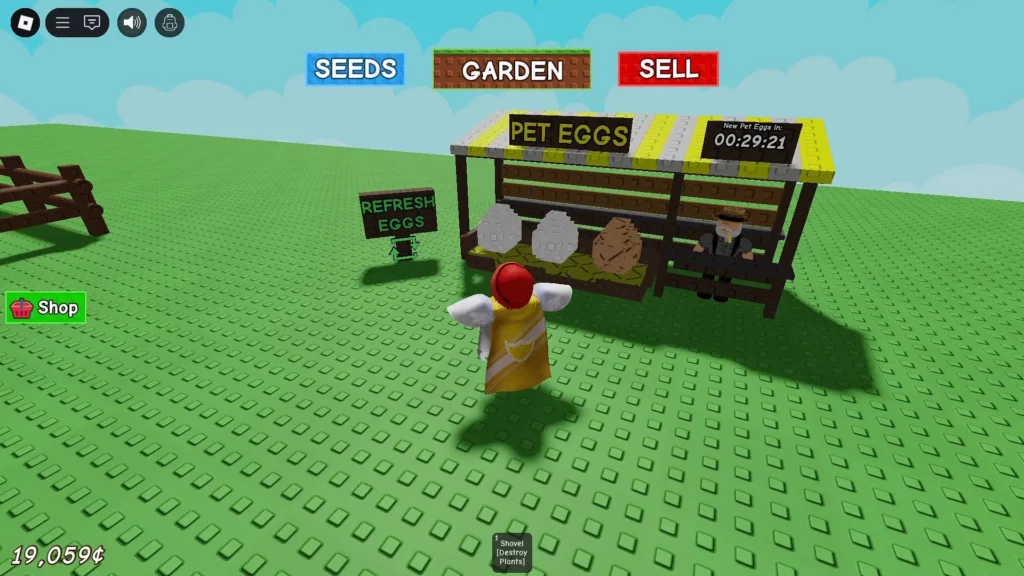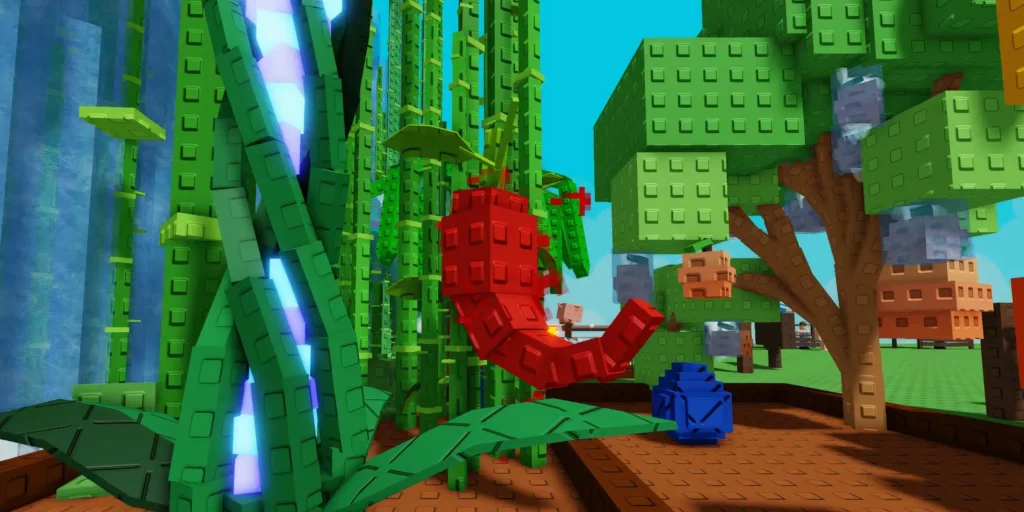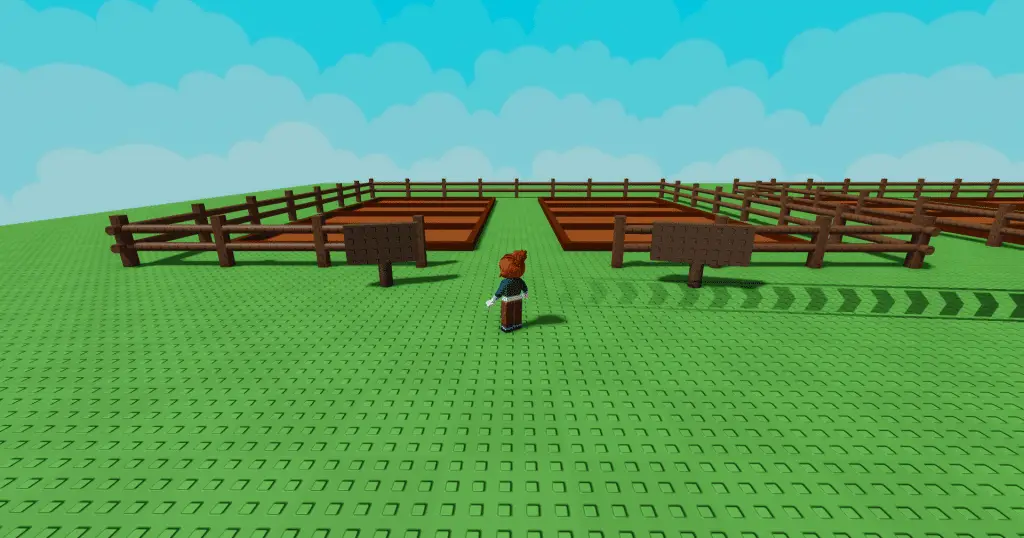Starting Grow a Garden with just 20 Sheckles and an empty plot might seem like a humble beginning, but with the right strategies, players can cultivate a thriving garden that generates impressive profits. This guide provides actionable advice for new gardeners to quickly progress, grow rare crops, and make the most of the game’s features. From choosing the best seeds to mastering in-game events, this roadmap ensures players can turn their patch into a flourishing empire.
Start Strong with Carrot Seeds
Every new gardener begins with 20 Sheckles, just enough to buy two Carrot Seeds at 10 Sheckles each. These single-harvest crops are the game’s starting point, maturing in mere seconds. Once ready, players can take their carrots to Steven at the Sell Stuff stand to cash them in. A standard carrot, weighing about 0.34kg, typically sells for around 30 Sheckles. On rare occasions, a mutated carrot might appear, fetching a higher price. Sticking with carrots early on is a reliable way to build a small stash of Sheckles for more advanced crops. By repeatedly planting and selling carrots, players can steadily increase their funds, setting the stage for bigger investments. The quick turnaround of carrot harvests makes them ideal for beginners looking to gain momentum in the game.
Transition to Multi-Harvest Crops
Once a few hundred Sheckles are accumulated, it’s time to move beyond single-harvest carrots. Multi-harvest crops, like Strawberries priced at 50 Sheckles per seed, offer better value since they produce fruit repeatedly until removed with a shovel. These plants take about a minute to fully grow, but their ability to yield multiple harvests makes them a smart upgrade. For players with a larger budget, Blueberry Seeds at 400 Sheckles are an option, though starting with Strawberries is more practical for most. The ongoing production of multi-harvest crops allows players to generate consistent income, making them a cornerstone of any successful garden. Choosing these crops early helps maximize profits while building toward rarer, more valuable plants.

Make Daily Shop Visits a Habit
The in-game shop, found via an icon on the left side of the screen, is a daily must-check for every gardener. Under the Forever Pack tab, a free item is offered each day, which could include Sheckles, gear, or Seed Packs. The contents refresh daily, so checking the shop right after logging in ensures players never miss out on these bonuses. These free items provide a small but consistent advantage, helping to bolster resources without spending hard-earned Sheckles. Making this a routine part of gameplay can add up over time, giving players an edge as they work toward more expensive purchases.
Complete Daily Quests for Exclusive Rewards
Located opposite the Seed Stall and Sell Stuff stand, the Gear Shop with green stripes is where players can find Eloise, who offers three daily quests. Completing all three rewards Seed Packs, which may include exclusive crops like Pineapple that can’t be bought at the Seed Stall. These quests are a key way to unlock rare seeds and keep progression on track. By prioritizing these tasks each day, players can steadily expand their crop variety and access plants that give them an edge in both profit and event participation. Regularly checking in with Eloise ensures no opportunities are missed.
Invest in Sprinklers for Better Yields
Gear in Grow a Garden comes with a hefty price tag, with the Basic Sprinkler costing 25,000 Sheckles. Despite the cost, sprinklers are a game-changer, boosting both crop growth speed and fruit size, which leads to higher sale prices. Players should wait until they’re consistently earning thousands of Sheckles from harvests before investing in a sprinkler. Once the funds are available, purchasing a Basic Sprinkler when it’s in stock can significantly increase crop value and accelerate garden growth. This investment pays off by producing larger, more profitable harvests, making it a critical step for scaling up operations.
Harness the Power of Pets
Introduced in the Animal Update, pets bring valuable passive abilities to the garden. They can dig up seeds, Sheckles, or gear, apply mutations to crops, and speed up plant growth. New players can hatch up to three Pet Eggs at a time, with three pets active in the garden. The Common Egg, priced at 50,000 Sheckles, offers a one-in-three chance of getting a Golden Lab or Dog, both of which dig up random seeds—including ones not yet purchased. However, limited-time crops like Candy Blossoms aren’t included in these finds. Pets are a long-term investment that can significantly boost garden efficiency, making them a priority once players have enough Sheckles to spare.
Feed Pets to Boost Their Abilities
Pet abilities improve as they age, but aging requires experience points earned through feeding. Keeping pets’ hunger meters full, even when offline, ensures they continue to grow and enhance their skills. Players should make a habit of feeding pets before logging off to maximize progress. The next time they log in, their pets will have stronger abilities, providing better support for the garden. This consistent care ensures pets remain a valuable asset, contributing to faster growth and more frequent rewards.

Dive into In-Game Events
Grow a Garden regularly hosts events with unique rewards tied to specific crops or mutations. For example, the Lunar Glow event requires players to deliver Moonlit Mutations to the Wise Old Owl, which simply involves being online during Nightfall and hoping for a mutation. These events are accessible even for players with limited Sheckles, as they rely on basic crops and patience rather than heavy spending. Participating in events not only adds excitement but also unlocks exclusive rewards that can enhance the garden’s profitability and variety.
Maximize Profits with Stacked Mutations
Mutations can significantly increase crop value, and stacking multiple mutations on a single plant can lead to massive payouts. For instance, a standard Grape Seed crop is profitable, but a Wet, Shocked, Frozen Grape could sell for up to 1.5 million Sheckles. Instead of harvesting valuable crops immediately, players should let them sit through various weather events to accumulate mutations. This strategy is especially effective for high-value crops like Grapes, where stacked mutations can turn a single plant into a fortune. Patience here can lead to exponential rewards.
Optimize Garden Space
With limited garden space, players must be strategic about what they keep. Early crops like Strawberries lose their value as rarer seeds like Mango, Coconut, or Dragon Fruit become available. Common, Uncommon, and even Rare multi-harvest crops should be cleared out with a shovel to make room for Mythical Seeds. Unless needed for daily quests, single-harvest crops like Carrots should also be phased out. By prioritizing high-value crops, players can maximize their garden’s profitability and efficiency, ensuring every square inch is used effectively.
Design a Multi-Layered Garden
Tall crops like Coconut trees can be difficult to harvest, but a multi-layered garden solves this issue. By strategically placing climbable crops like Apple, Peach, or Dragon Fruit trees, players can reach higher plants. Even Bamboo can be scaled by walking directly into it. Thoughtful crop placement ensures all fruits are accessible, streamlining the harvesting process. This approach not only saves time but also makes the garden more functional, allowing players to fully utilize their space.
